Sly like a fox, fierce like a wolf, and persistent as can be, the coyote is one of nature’s most cunning creatures. It’s no wonder, then, that so many cultural traditions see the coyote as the consummate trickster. While wolves can rely on their physical prowess, the much smaller coyote must be sneaky, stealthy, and smart in order to satisfy its appetite. Amongst humans, this canine often gets a bad rap. Coyotes are known to intrude into yards and snatch unattended pets on occasion. It’s important, though, that we remember that this majestic animal was here long before any of the homes or gardens where it is now so unwelcome.
Coyote’s are intelligent, sociable, and tenacious. Look beyond the coyote’s nuisance reputation and you’ll find an animal that is both fascinating and beautiful. Read on to learn more about the meaning of the coyote!
Table of contents
Coyote symbolism and meaning
In general, coyotes symbolize cleverness, cunning and intelligence. The coyote is known for its wiliness and guile. In some instances, this clever nature imbues the coyote with positive symbolism. Some think of the coyote as intelligent and adaptable. In other cases, though, the coyote’s cunning is seen as the mark of a coward. The trickster coyote is sometimes thought of as an underhanded cheating type.
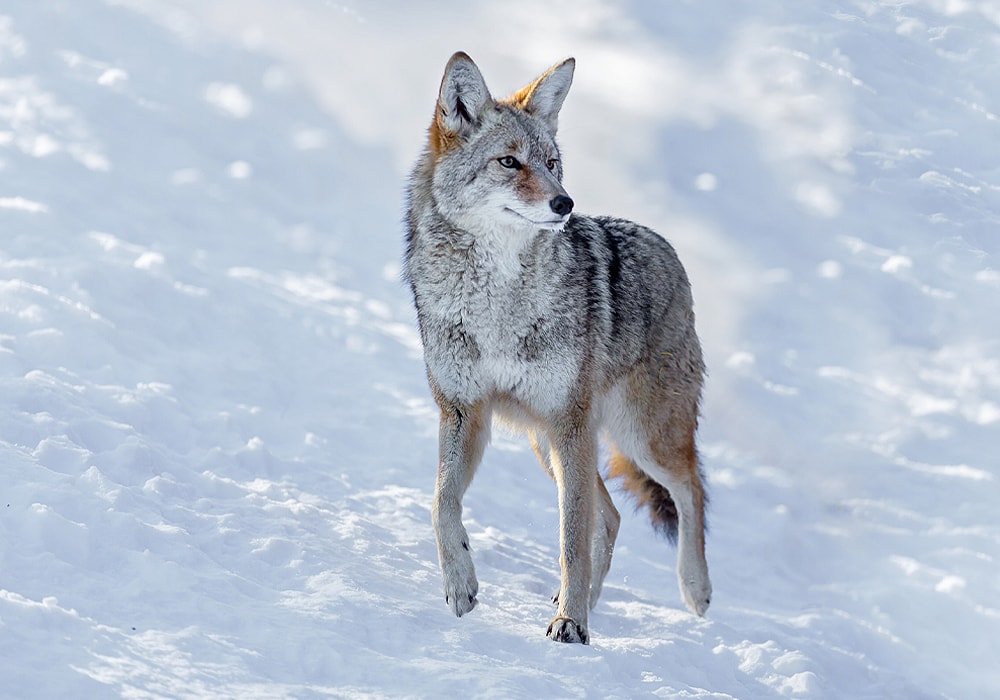
One of the most distinctive traits of the coyote is its voice. Throughout North America, the coyote can be heard howling and yipping, especially in the evening. The sounds of the coyote are often thought of as haunting or eerie, however many find them to be beautiful. Like hyenas, coyote yips are often interpreted as sounding like peals of laughter. Coyotes, then, can represent communication, playfulness, and expression. (1)
Coyotes live in structured groups or packs, even when found in more urban or suburban settings. Highly social, coyotes maintain their territories together as a pack, but more often hunt by themselves. (2)
Coyotes are known to form monogamous pairs which bond to one another fiercely. Bonded coyote pairs are observed to separate only when one of the pair dies. As such, the coyote can be connected with loyalty, faithfulness, and romance. (3)
Finally, the coyote is a consummate opportunist. Capable of both hunting and scavenging, the coyote does what it needs to do in order to survive. For this reason, coyotes may be connected with tenacity, stubbornness, vitality, resourcefulness, or thievery. While scavenging may earn the coyote a negative reputation, nature’s scavengers play very important roles within their ecosystems and the coyote is no exception.
Coyote Native American symbolism
Coyotes are incredibly important creatures within many Native American cultures. Although this animal is prevalent in Native cultures throughout the Americas, the meaning and role of the coyote varies quite a bit between groups. Largely, coyotes take on the role of a trickster god in Native American myths and stories. In some instances, this means that the coyote is an antagonist who represents cunning and evil. In many other cases, though, the coyote is a clever protagonist whose wits are used for strategic victories. For some cultures, the coyote’s role is even a bit ambiguous. It is a true trickster with no set alignment. (4)
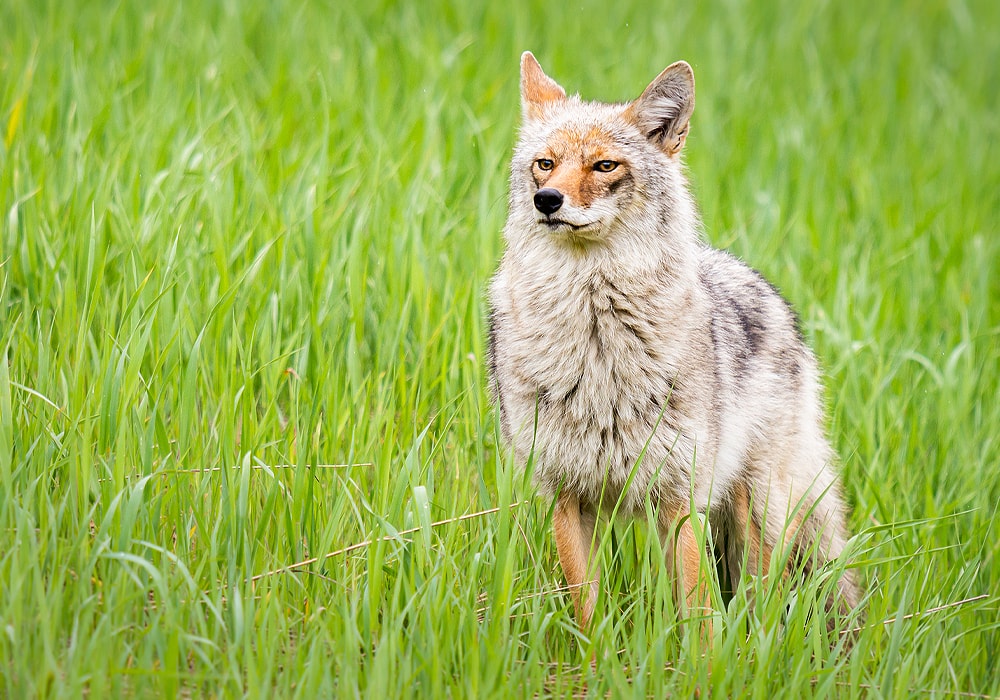
In Navajo traditions, Coyote is a figure as old as the earth itself. In Navajo creation stories, Coyote is often a bringer of destruction or death. In one version, he even causes the flood at the beginning of the earth’s history. Despite this, he is revered as being the most skilled and knowledgeable around. When it comes to healing and medicine, nobody is expected to be more capable or wise than Coyote. (5)
In other cultures, the coyote alternates between roles as a creator/benefactor or a tormentor of mankind. Coyote’s stories are sometimes humorous cautionary tales in which the sly but over confident Coyote receives a poetic comeuppance. In many traditions, however, the role of the coyote is much more serious. Several cultures treat him as the overseer of life and death and the dispenser of justice towards humans who act unwisely or rashly. (6)
Coyote Eastern Symbolism
Coyotes are native specifically to the North and Central America, however similar canines exist around the globe.
In Japan, “Kitsune,” which simply means “fox,” are powerful spirits who possess a range of supernatural abilities. Embodying both the divine and the demonic, the kitsune can be a benevolent representative of the fox god, Inari, or an evil trickster bent upon destruction. Kitsune are known for their shapeshifting abilities. (7)
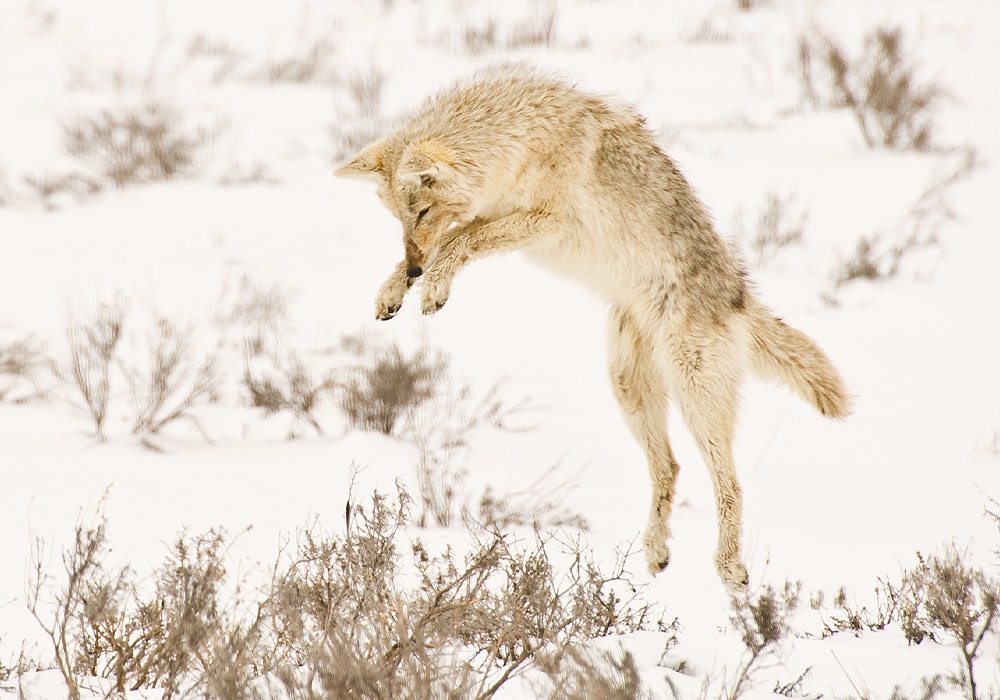
In Buddhist traditions, jackals, which are close relatives of coyotes, are associated with death and all things profane. Some Buddhist religious practices encourage one to meditate on the meaning of the jackal as a means of accepting death and acknowledging the impermanence of life: all humans die one day and are fed upon by scavengers like jackals. (8)
In Hindu mythology a number of gods are associated with jackals. Parvati, the wife of the god Shiva, is often depicted as riding a jackal. The goddess of death and destruction, Kali, is also sometimes pictured with a jackal as her divine vehicle. Jackals are sometimes connected with Shiva himself. For these reasons, some Hindus hold jackals to be sacred and refuse to harm them. (9)
Coyote Christianity symbolism
Because coyotes are limited to North and Central America, they do not feature prominently within the Bible. Jackals, which are quite similar to coyotes, do appear in many Bible verses.
In Job 30:28-30, Job laments his fate as God has seemingly forsaken him:
“I go about blackened, but not by the sun;
I stand up in the assembly and cry for help.
I have become a brother of jackals,
a companion of owls.
My skin grows black and peels;
my body burns with fever.” (10)
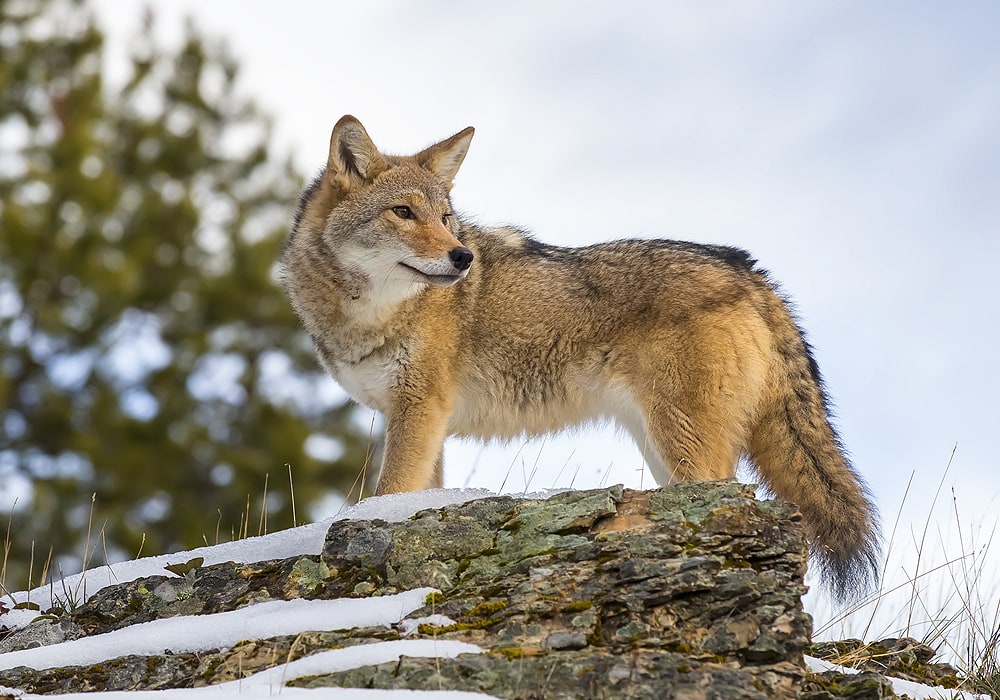
In Psalms 63:9-11 the jackal is mentioned yet again, this time as a scavenger associated with death and carrion:
Those who want to kill me will be destroyed;
they will go down to the depths of the earth.
They will be given over to the sword
and become food for jackals. (11)
In Isaiah 13:20-22, the jackal is mentioned in the context of the destruction of the city of Babylon:
But desert creatures will lie there,
jackals will fill her houses;
there the owls will dwell,
and there the wild goats will leap about. (12)
From these passages it is plain to see that the biblical jackal is a creature connected with death, destruction, carrion, degradation, and wildness. While most of these meanings are negative, it is important to note that nature’s wildness is neither pure nor profane. It is simply nature. The jackal, in many passages, embodies the untamed wilderness.
Coyote Celtic symbolism
Coyotes are not present in regions inhabited by the Celts. The Jackals which do inhabit these regions can be connected with chaos, the occult, and otherworldly forces. The Morrigan, who is a Celtic goddess associated with chaos, is sometimes depicted alongside jackals. (13)
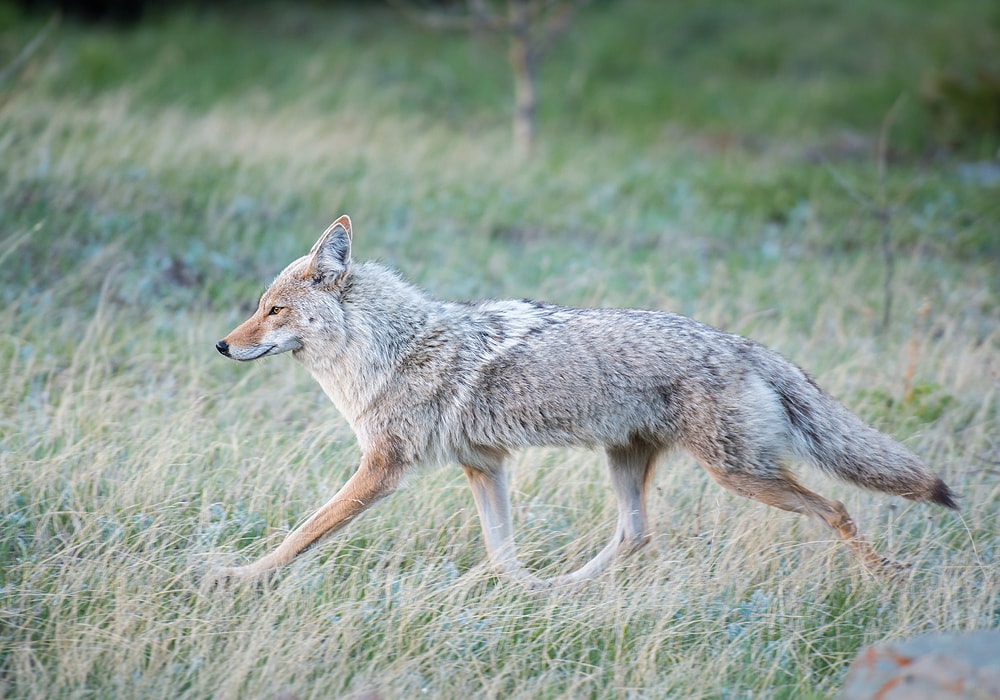
Throughout Celtic mythology, dogs are important emblems of various warriors and powerful deities. Because coyotes and dogs are both canines, the coyote may be connected with ferocity, faithfulness, and wit.
Coyote African symbolism
In Egyptian culture, Anubis is the God of death and is illustrated having the head of a jackal. Anubis is a powerful deity who is especially connected with the embalming process. Jackals are connected with death because of their scavenging behaviors.
Egyptian mythology describes a jackal carrying the infant pharaoh of the gods, Horus, on its back to pass him over water. As a representation of the Sun, Horus burned the coyote’s back, and it is believed that this is why it has black stripes on it’s back today. (14)
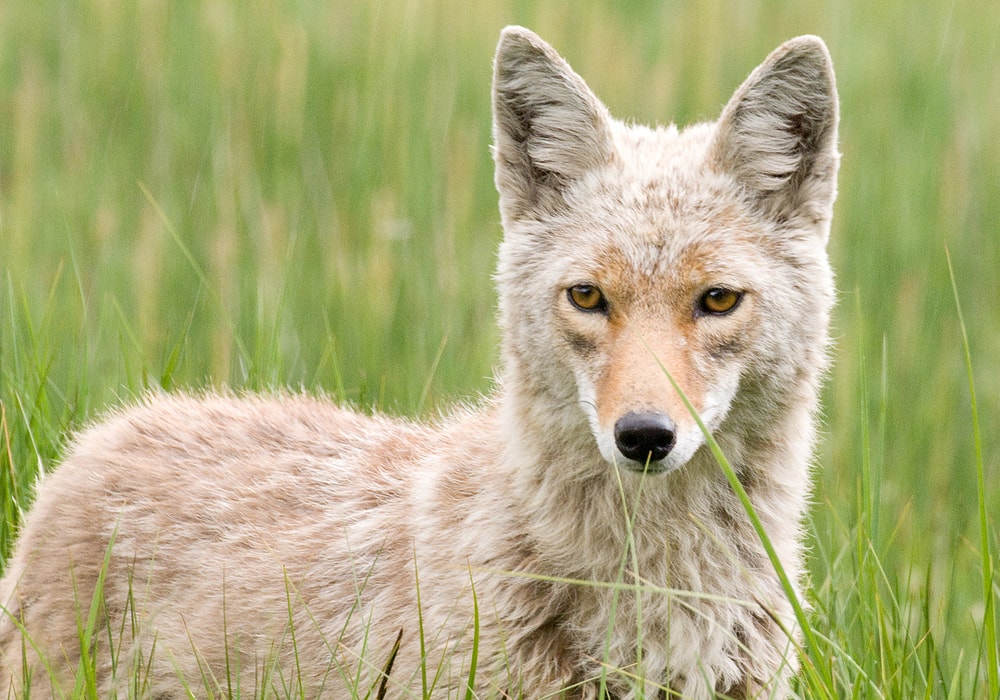
One piece of African folklore describes the trickster jackal outwitting the ferocious lion. The lion was a better hunter than the jackal, so one day the jackal convinced the lion to let him carry his meat in exchange for a small portion. Working as a team, the lion loaded the jackal with meat, however the jackal never brought this food back to the lion’s family. Instead, he fed it to his own pups. Furious, the lion tried to punish the jackal, but the wily canine was too clever for him. In the end, the jackal slew the lion using a cunning trick. (15)
Coyote in dreams
Dreaming of coyotes may feel like a bad sign, however these canines have a variety of meanings and he appearance of one in your dreams is not always such an unlucky omen.
Dreaming of a howling coyote may indicate a need to express oneself creatively. Coyotes are incredibly vocal and unafraid to share what’s on their minds. Make sure you are being authentic with yourself and not stifling areas of your personality.
Dreaming of a pack of coyotes may signify loneliness. Coyotes defend their territories in packs which are socially complex and consist of many monogamous pairs. Dreaming of such a pack may indicate a desire to find your own “pack” to run with.
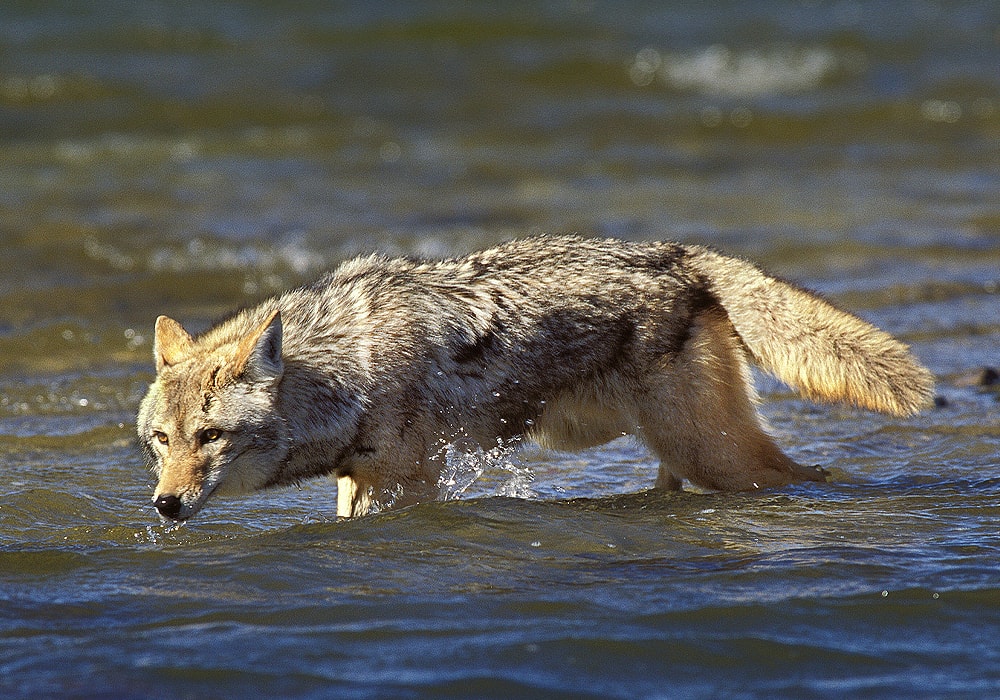
A coyote dream may also indicate playfulness. Dreaming of coyote pups or coyotes that are running and playing together indicates the desire to reconnect with one’s youth or to take a break from responsibility for a little while.
Finally, dreaming of a scavenging coyote indicates cycles within one’s life. In nature, death is part of the cycle which includes the birth of new life. A scavenging coyote dream may indicate the impending start of a new chapter in your life.
Coyote encounters and omens
Encountering a coyote may be a bit alarming, however these animals rarely pose a threat to humans. Because they are still wild creatures, and because they can be disease vectors, avoid getting too close to a coyote. They are best appreciated from a safe and respectful distance. As an aside, feeding coyotes is never a good idea and is likely to harm these animals in the long run. Wild animals who do not fear humans are likely to hurt someone or to be hurt themselves. (16)(17)
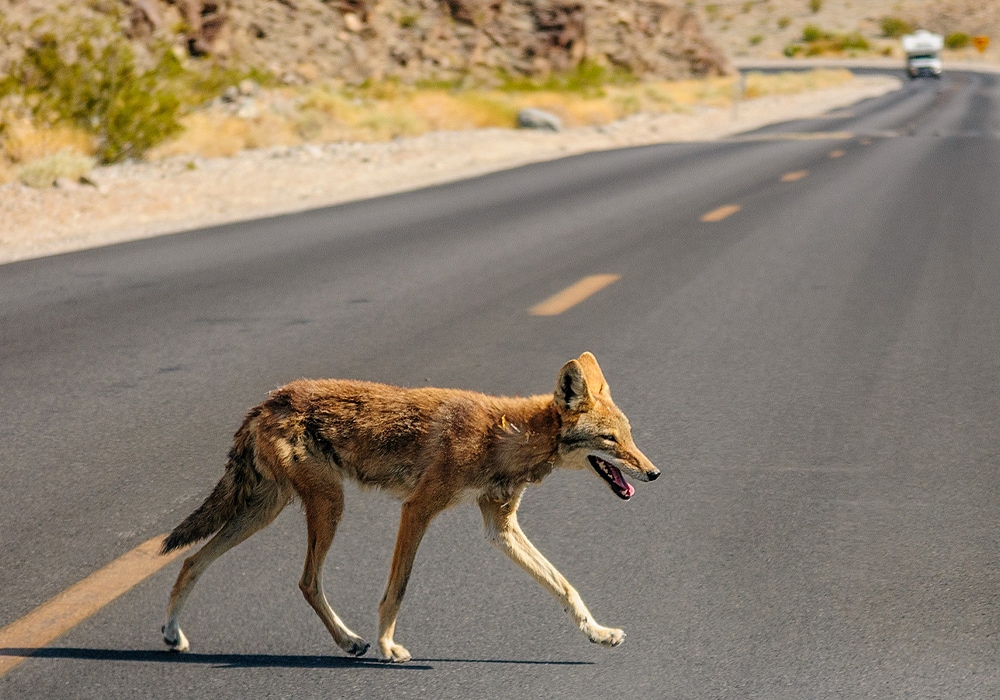
Seeing a coyote is often a sign to look inward and find one’s inner strengths. In many myths, the coyote is able to best creatures much larger and stronger than itself through its cunning. The coyote knows its own strengths and odes not try to be someone that it isn’t.
Crossing paths with a coyote is sometimes seen as bad luck, however these encounters may represent opportunities to reflect upon the coyote’s virtues. Try to be resourceful, clever, and stubborn when facing the problems in your path. You may find that the coyote’s methods have allowed it to adapt to human habitats for a reason.
Coyote mythology and folklore
Pima mythology states that cremation was first invented as a means of outsmarting the hungry Coyote. In this legend, Rabbit was the first creature on earth to die because he would not heed Rattlesnake’s warnings. Rattlesnake did not like being touched and begged the creator for help. The creator gave Rattlesnake fangs so that the next time Rabbit touched him, Rattlesnake could threaten and bite him. Rattlesnake’s bite made Rabbit very ill and before long he died. To hide Rabbit’s body from Coyote, the people made the first fire. Ravenous, Coyote tried to eat the burning Rabbit, but the fire turned his mouth black. (18)
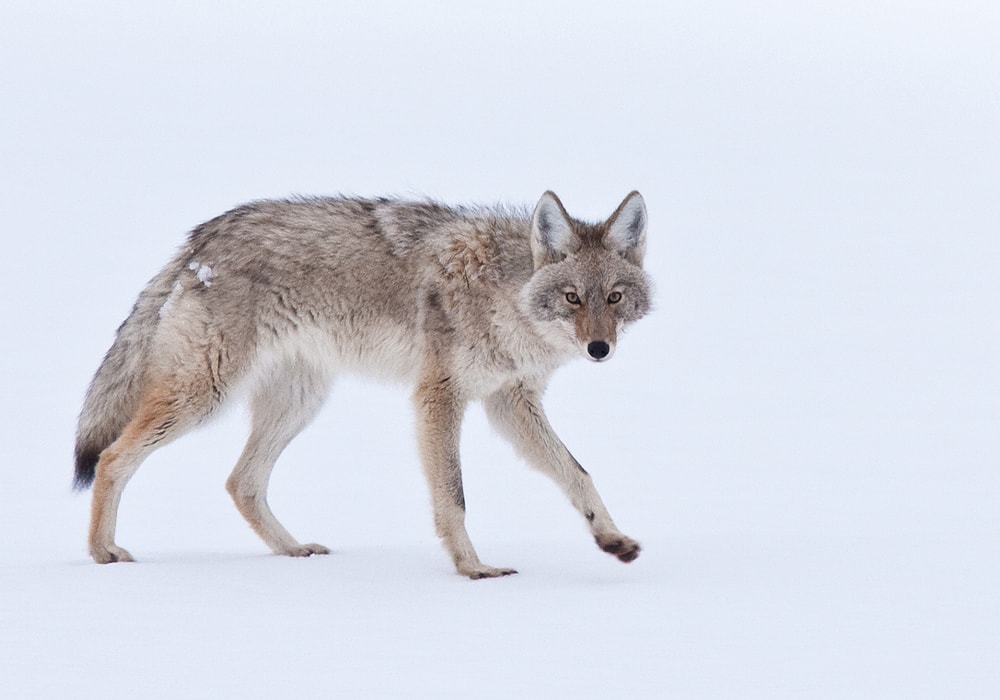
According to an Achomawi story, foul weather is the fault of Coyote’s pride, laziness, and gluttony. In this story, Coyote, believing himself to be the fastest around, challenged the great Cloud to a race. If Coyote won, Cloud would agree to permit the weather to be fair at all times, but if Coyote lost, Cloud would be allowed to conjure storms whenever the mood struck him to do so. Coyote was fast, so he took the lead at first, but Cloud knew his nature and used magic to grow fat tasty fruits in Coyote’s path. Seeing that Cloud was far behind, Coyote stopped and devoured the fruit only to see Cloud cross the finishing line. It is because of this race that storms shake the earth whenever Cloud’s wills. (19)
Coyote spirit animal
The coyote spirit animal is easy-going, personable, smart, and resourceful. Prone to laziness, the coyote spirit animal sometimes struggles with hard work and may give up on things that don’t come easily to it. Fortunately, the coyote spirit animal’s intelligence allows it to find clever shortcuts wherever possible.
People with the coyote spirit animal enjoy laughing and playing pranks, but are very protective and considerate of their loved one’s feelings. The coyote’s playfulness often draws others to this animals, but true friends love the coyote not for the fun it brings but for its faithful personality.
Coyote totem animal
The coyote totem animal is associated with cycles and transitions. This totem often connects people with their youth and reminds them that growing up means growing into oneself not out of the child you once were.
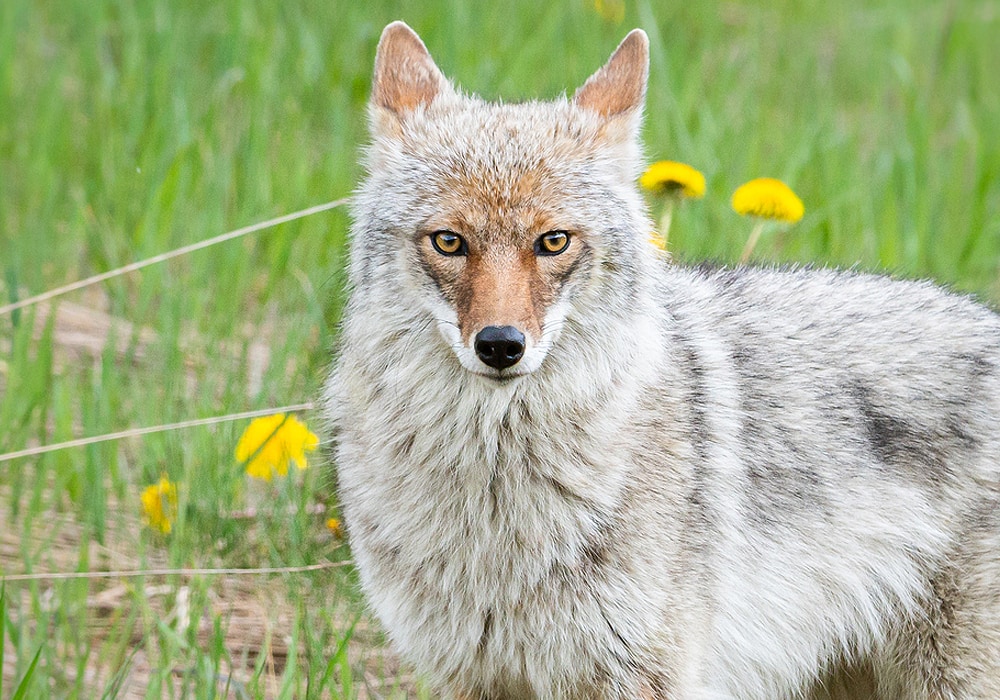
The coyote totem is potent in those who work with children and teens as this totem animal is empathetic and gifted at healing and easing others through life’s transitions.
Coyote power animal
The coyote power animal is associated with shapeshifting and fluidity. People with the coyote power animal cannot shapeshift literally, but they do have the ability to intuit, understand, and then imitate the behaviors that others expect of them.
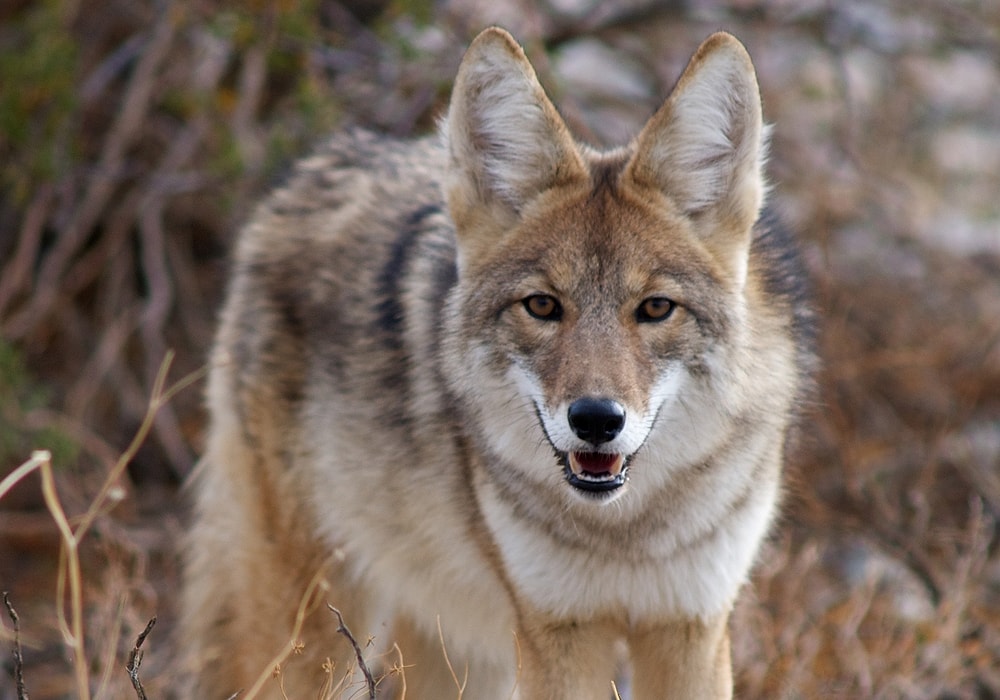
The power of the coyote comes from the ability to know oneself and to accept and embrace change. With these too tools in one’s arsenal, learning to be a highly adaptable version of oneself is a simple matter. This adaptability helps the coyote power animal navigate life’s challenges with fluidity and grace.
Coyote tattoo meaning
A coyote tattoo may be chosen as a way of representing one’s “wild side.” Symbolizing freedom and nature, coyotes remind us to be our true selves and to shrug off the chains of conformity.
A coyote tattoo may have spiritual significance for people belonging to a number of Native American groups. As such, a coyote tattoo may commemorate the trickster Coyote figure or simply serve as a reminder of one’s heritage.

Coyotes are clever, resourceful, and sneaky. A coyote tattoo may remind you to “work smarter not harder” when it comes to tackling your personal goals.
Finally, despite their monogamous faithfulness and general sociability, coyotes are often maligned. So, a coyote tattoo may represent the feeling of being misunderstood or underestimated.
Conclusion
It is obvious from studying the coyote that this creature’s reputation is hardly fair. Many animals rely on scavenging to secure their meals, including animals which are generally beloved like the Bald Eagle. And yet, the coyote is thought of as a thief, a trickster, and a menace. This is because these creatures have adapted to human habitations and have found novel ways to survive alongside us. The coyote is a powerful symbol of the strength and perseverance of nature itself. In that respect, I find coyotes quite admirable.
Related
